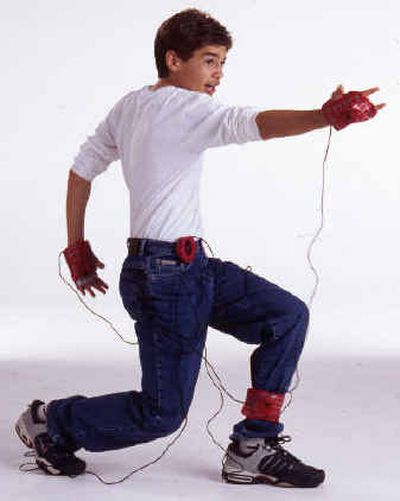Kids moved by new products

NEW YORK – Some of the new video games on the market make children move more than their thumbs – they get the kids off the couch and get them to exercise.
With television and video games often blamed for contributing to the growing problem of obesity in children, video game makers and children’s TV companies are creating shows and games that motivate children to move around or offer story lines that encourage exercise.
“All this physical marketing stuff is a powerful marketing tool,” said Chris Byrne, a New York-based independent toy consultant.
“Parents are concerned about the level of physical activity that their kids are engaging in,” he said. “And kids like it because it gives them a chance to be physical but most importantly be in control of their play experience.”
This fall, the Nickelodeon children’s cable television network will introduce a program called “LazyTown,” a blend of live action and animation, where the village’s children are torn between a health-conscious superhero named Sportacus and lazy Robbie Rotten, who spends his days lounging around.
Ragdoll Ltd., creator of “Teletubbies,” is to release toys this fall tied to “Boohbah,” a show aimed at toddlers that began on PBS in January and features actors in colorful rotund costumes who perform aerobics and urge kids to dance. The new toys also encourage children to move around.
Meanwhile, in video games, Sony Computer Entertainment America has done well with its new EyeToy series, which comes with a camera that sits on top of the TV, making the player the star of the screen. The series was made for PlayStation2. With EyeToy: Groove, which targets the 7-to-11 age group, players dance to one of 28 pop tunes – and it comes with a calorie counter.
Unlike the other EyeToy versions, EyeToy: AntiGrav – a skateboarding or snowboarding game expected this fall – players don’t see themselves on the screen. Rather, they use their body to control a character on screen; the camera uses a motion tracking technology that instantly translates body movement into on-screen interaction.
Toy Quest Entertainment, meanwhile, has launched Spider-Man 2 Web Action Video Gaming System, which has Spider-Man mirroring a child’s movements on the TV screen using sensors strapped on the child’s wrists and ankle.
“We are trying to get away from the simple joy stick and button control,” said Bob Del Principe, vice president of research and development for Toy Quest. “You forget you are actually exercising.”
According to the Centers for Disease Control and Prevention, approximately 16 percent of boys and 14.5 percent of girls, ages 6 to 11, were obese in 1999 and 2000. That compares with 4.3 percent of boys and 3.6 percent of girls between 1971 and 1974. A sedentary lifestyle is a big contributor to the problem.
Daniel Decker, who has girls ages 1 and 4, said he welcomes shows like “Boohbah” that get kids to move around.
“I don’t want my kids to be vegging out, but if they are going to be exposed to TV, at least these shows cause them to use their motor skills,” the Jacksonville, Fla., resident said.
Developing a video game that combines technology with exercise is trickier than creating a TV show that encourages children to break a sweat, according to Doug Lowenstein, president of Entertainment Software Association, an industry trade group.
“How many different types of games lend themselves to that experience?” asked Lowenstein. “The whole game has to be lots of fun. How do you translate the motion of movement that makes sense?”
Lowenstein and others say the video game Dance Dance Revolution – which created a craze in the nation’s arcades and is now popular among video game players at the home – made the industry realize “gamers are willing to experience a game other than in a sitting position.”
With DDR, players facing a video screen, stand on a 3-foot square platform with an arrow on each side of the square – pointing up, down, left and right. As an arrow moves to the top of the video screen to the beat of the song, players step on the corresponding arrow on the platform.
More than 1 million copies of DDR’s home version have been sold in the United States since 2001, according to Peter Nguyen, a spokesman at Konami Digital Entertainment-America.